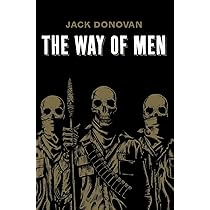Chapter 18 — What is “Art”?
byChapter 18 — What is “Art”? opens with the recollection of a young artist’s uncertainty in the shadowy world of foreign studios, where the phrase “it’s not Art” was often wielded as a conclusive critique. These dismissals, vague yet powerful, cast doubt not only on the work produced but on the very identity of the creator. Among students and teachers alike, confusion reigned, as standards seemed subjective and ever-changing. There was no rulebook, only a chorus of opinions, many of which contradicted each other. Such an environment fostered not growth, but hesitation. The fear of being told one’s work “wasn’t art” could stifle creative courage before it fully emerged.
Amidst this confusion, the chapter tracks the instability of artistic fame and reputation. Bastien-Lepage, once admired as a revolutionary figure in French painting, fell quickly from grace, his style labeled outdated within a few years. What had once been acclaimed by critics and collectors was later dismissed with laughter. This rapid shift illustrates the fickle nature of cultural taste. The point is clear: public consensus on art is often unreliable. The art world’s valuation shifts like fashion, rewarding some, then forgetting them. The narrator sees this as a reflection not of the artist’s worth but of the capricious standards set by a few.
Art’s value, the author argues, cannot lie solely in recognition or monetary appraisal. Prices climb and fall, and celebrated artists of one generation are ignored in the next. Even old masters are not immune—some gain honor posthumously, others fade despite their genius. This volatility reveals how fragile our definitions of artistic worth are. True merit must lie elsewhere, not in markets or museum walls. What matters, perhaps, is not recognition, but resonance—how deeply a piece can move the heart. This leads the narrative to seek a more grounded and human-centered definition.
In Tolstoy’s assertion—that art is any form of emotional communication between individuals—the author finds clarity. This idea, so simple yet profound, breaks art free from exclusivity and theory. It places meaning in the connection created, not in the credentials of the creator. One need not be trained or endorsed to create something meaningful. A poem scribbled in grief, a drawing made in joy—these too are art if they share a genuine human feeling. This understanding turns everyone into a potential artist. Creativity is not reserved for the elite but accessible to all who feel and express.
Rejecting elitism, the author challenges the common belief that art must be evaluated by experts to be valid. Critics and curators may guide opinions, but they do not define truth. Art cannot be dictated by academic language or gallery approval. Instead, it must be felt by the viewer, not explained away. By demystifying art, the chapter calls for empathy to replace analysis. In that view, a child’s painting has the same emotional value as a master’s canvas—if it moves us, it succeeds. Art lives in emotion, not perfection.
The narrative continues by questioning whether museums and institutions are helping or hurting the public’s relationship with art. When works are displayed as relics rather than living expressions, their impact may be dulled. Too often, viewers feel unqualified to interpret or enjoy them. But when a piece is approached with openness instead of reverence, it can speak directly to the soul. The author suggests art should invite rather than intimidate. Art education, then, should focus less on critique and more on connection—encouraging creation, not just appreciation.
In that spirit, the chapter encourages ordinary people to engage with art in daily life. Singing a song, taking a photograph, or sharing a story all fall under Tolstoy’s inclusive vision. These acts, when born of emotion and shared sincerely, hold as much artistic weight as formal works. By this logic, community murals, diary entries, and even heartfelt conversations are valid forms of art. This idea breaks down the barrier between audience and creator. It transforms art from a product into a process.
Ultimately, Chapter 18 — What is “Art”? stands as a manifesto for emotional authenticity in creative expression. It critiques the arbitrary systems that have tried to define and limit art while embracing a broader, freer, and more humane understanding. Through this lens, art is no longer a prize to be earned but a natural human act to be shared. By focusing on connection instead of classification, the chapter restores art to its original purpose: to express what it means to feel, to live, and to be understood.

